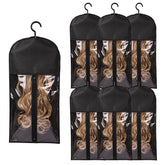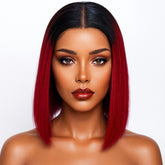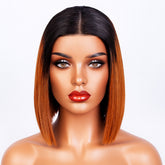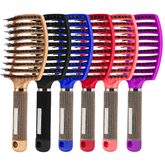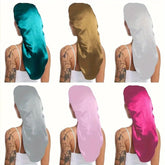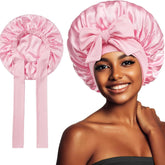Why the '90s Lob Is Back — How the Trend Works Today

The long bob, or “lob”, has returned with a distinctly ’90s flavour: slightly longer, face-framing and effortlessly undone. What began as a nostalgic revival has quickly become a mainstream haircut choice for those seeking movement, manageability and a tidy yet stylish silhouette. This piece unpacks why the lob is resonating again, who it flatters, and how to approach the cut and aftercare to make it work for modern UK lifestyles.
What the ’90s lob actually is — and why it’s trending
The lob sits between a short bob and mid-length hair, typically grazing the collarbone. The ’90s iteration favours soft layering, a centre-or-parted finish, and a lived-in texture rather than a severe blunt edge. Its return feels seasonal — part nostalgia, part practicality. Many people are seeking lower-maintenance styles that still look polished, and the lob answers both desires: it’s short enough to feel fresh but long enough to be versatile for styling.
Who suits a lob — tailoring it to face shape and hair type
One of the lob’s strengths is adaptability. It can be personalised to complement facial features and hair texture without dramatic styling changes.
- Fine hair: A blunt-ended lob can create the illusion of thicker ends. Ask your stylist for subtle texturising only at the tips to avoid losing weight.
- Wavy hair: Embrace the natural movement with longer layers that enhance waves rather than flatten them.
- Curly hair: A lob can work if cut with curl-specific techniques; keep length to preserve shape and avoid excessive shrinkage.
- Round or square faces: Longer front pieces or face-framing layers help elongate the silhouette.
- Oval faces: Consider yourself lucky — most lob variations will suit an oval face equally well.
When consulting with a stylist, bring photos of the exact finish you want and discuss daily styling habits. A good cut should reflect how much time you want to spend styling each morning.
Styling, upkeep and realistic expectations
Maintaining a lob isn’t about daily salon visits, but it does require basic styling know-how to keep the shape. Here are practical tips for different looks and routine care:
- Everyday polish: A quick blow-dry with a round brush smooths the hair and enhances the lob’s gentle curve.
- Texture and movement: Use a salt spray or light mousse on damp hair, then scrunch or diffuse to encourage a relaxed finish.
- Sleek option: For a sleeker look, a flat iron with heat protection creates that ’90s glossy vibe — keep passes minimal to avoid heat damage.
- Refreshing the cut: Expect to visit your stylist every 8–12 weeks for trims to maintain the shape and avoid split ends.
- Colour considerations: Subtle tonal changes, like soft balayage or face-framing highlights, can lift the cut without overwhelming the shape.
Products matter, but so does technique. Lightweight creams and serums provide shine and control without weighing hair down; stronger oils can be saved for ends. For those with naturally oily roots, dry shampoo can extend time between washes while preserving styled volume.
How to transition safely if you’re growing out long hair
Cutting off several inches can be daunting. If you’re moving from long lengths to a lob, consider a staged approach to find the right length and reduce shock:
- Start with a long lob or collarbone-length cut and observe how it sits day-to-day.
- Ask your stylist to remove weight and add subtle shaping rather than an immediate dramatic chop.
- Use deep-conditioning treatments if your ends feel stripped after the cut — this helps maintain shine and elasticity as you adapt to a shorter length.
Takeaway
The ’90s lob is a versatile, contemporary take on a classic shape: practical for everyday wear, adaptable across hair types, and easy to personalise. Whether you want a low-maintenance refresh or a bold change, the lob balances style with manageability — just talk through length, texture and daily routine with a trusted stylist to get a look you’ll wear every day.
Explore More: Discover related reads from Hairporium — News • Guides • DIYs • Expert Articles.
Stay Updated: Read more UK hair industry news and innovations on Hairporium News.

